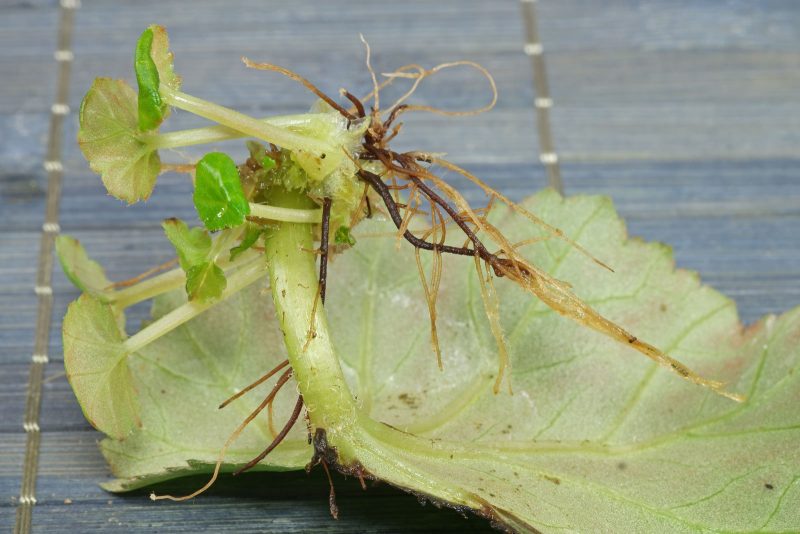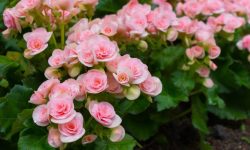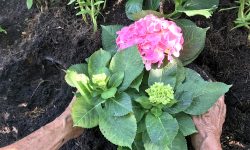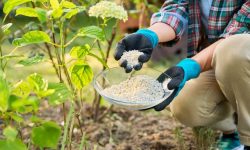Begonias are loved for their charm, variety, and resilience. Their colorful flowers and striking leaves brighten homes and gardens everywhere. With hundreds of species and hybrids, each begonia brings unique beauty. Many gardeners soon wish to expand their collection without constant trips to the nursery. Propagation is the most rewarding path to achieve this dream.
Learning how to root a begonia turns a single plant into many. A small cutting, when nurtured, can grow into a thriving plant. This process saves money and brings deep satisfaction. Beginners gain confidence, while experienced gardeners expand rare collections. Rooting begonias is not only about multiplication but also about understanding growth. It is an exciting way to connect with nature. Every cutting you root adds lasting color and beauty to your living space.
Understanding Begonia Varieties for Propagation

Begonias form one of the most diverse plant groups in the gardening world. Some are grown mainly for flowers, while others for unique foliage. They range from small compact plants to larger dramatic types. Understanding which variety you have is crucial before starting propagation. Each type reacts differently to cutting and rooting methods.
Fibrous begonias, such as wax begonias, are popular for their toughness and adaptability. They root quickly in both soil and water, making them excellent for beginners. Tuberous begonias impress with large flowers in many colors. They can also be propagated but usually demand controlled conditions and extra care. Rhizomatous begonias, including the famous Rex, attract attention with bold, patterned leaves. They root well from leaf sections, but growth often takes longer. Cane begonias, known for their upright stems, also root effectively from cuttings. Each variety offers unique strengths and challenges.
Choosing the right variety influences the entire propagation journey. Fast-rooting types reward gardeners quickly, while slower ones test patience. Beginners should start with fibrous or cane types for confidence. Experienced growers may enjoy the challenge of rhizomatous or tuberous types. Selecting a variety that matches your skill level prevents failure and builds satisfaction. Rooting begonias is not only about multiplying plants. It is a process of learning and appreciating the wide diversity of this remarkable genus. Every variety has something valuable to offer, and mastering them expands your gardening expertise.
Essential Tools and Materials for Rooting Begonias
Rooting begonias becomes enjoyable when you have the right tools at hand. The process begins with clean, sharp scissors or pruning shears. Sterilizing your blades before cutting prevents bacteria and fungus from spreading. A clean cut allows the plant tissue to heal and produce new roots quickly. Small pots or seed trays with drainage holes are also essential. Good drainage prevents standing water, which can damage tender cuttings and lead to rot.
The choice of growing medium is equally important for success. Begonias prefer light, airy mixes that balance moisture with airflow. Many gardeners use a blend of peat moss and perlite because it drains well but stays slightly moist. Vermiculite can also work, especially when you want even water retention. Some gardeners enjoy starting cuttings in water, watching roots develop over time. Whichever method you choose, cleanliness and consistency matter most. Rooting hormone is another helpful material, giving cuttings a boost and speeding up root formation.
Additional supplies create a stable and nurturing environment for growth. A clear plastic bag or propagation dome keeps humidity around the cutting, protecting it from drying out. A simple spray bottle helps mist leaves gently, avoiding disturbance of the soil. Labels are useful for keeping track of dates and different varieties. Even proper lighting counts as a tool, since begonias thrive with gentle, indirect light. Preparing all materials ahead of time saves stress and ensures your focus remains on the joy of watching roots form. With the right setup, a tiny cutting transforms into a strong, thriving plant that adds beauty and life to any space.
Choosing the Right Cutting Method
Gardening is more than a simple pastime; it is a doorway to a calmer and more meaningful life. When your hands press into the soil, you reconnect with the earth in its most natural form. The sound of birdsong and the scent of fresh flowers create a space that feels peaceful. Even short moments in the garden offer relief from stress and a sense of grounding. A small seed transforming into a vibrant bloom is always a quiet reminder of life’s miracles.
Spending time with plants brings balance in a world often dominated by speed and noise. Each new bud, leaf, or sprout reveals the importance of patience and presence. Gardening teaches you to slow down and appreciate changes that may seem minor but are deeply beautiful. As you water or prune, you feel part of something greater. The garden becomes not just a place for plants, but a sanctuary for the spirit. This nurturing cycle benefits both the earth and the gardener’s inner world.
The rewards of gardening extend far beyond emotional comfort. Tending plants provides gentle physical exercise that supports strength and flexibility. Sunlight on your skin supplies vitamin D, which is essential for health and vitality. Homegrown vegetables, fruits, or herbs bring nourishing meals to the table. The pride of enjoying what you have cultivated by hand is deeply fulfilling. Fresh flowers brighten spaces and lift moods, creating joy in everyday life. A garden, whether small balcony pots or wide backyard beds, transforms into a living refuge. It is a source of beauty, healing, and lasting happiness.
Preparing Stem Cuttings for Propagation
Preparing stem cuttings is the first and most important step in propagation. This stage determines whether your effort will succeed. Healthy parent plants provide the strongest cuttings, so always choose vigorous stems free from pests or disease. Look for stems that are young but not too soft, firm but not woody. Using clean, sharp pruning shears is essential to avoid crushing the stem. Make every cut smooth and precise to give the cutting the best chance. Early morning is the perfect time, as plants are full of natural moisture. Every detail here adds up to stronger, healthier new growth.
When cutting, aim for a length between four and six inches. Shorter cuttings may dry quickly, while longer ones may struggle. Always cut just below a node, the point where leaves attach. This is where plant cells are most active and ready to root. Strip off lower leaves carefully, leaving only two or three near the top. This prevents excessive moisture loss and directs energy downward. If leaves are large, trim them in half to reduce evaporation. For woody stems, make a diagonal slice to increase the rooting surface. Each thoughtful step increases the cutting’s chance to develop roots.
After preparing the stems, move quickly to encourage rooting. Dip the cut end in rooting hormone to stimulate cell activity. Though optional, it greatly benefits plants that root slowly. Place the prepared cuttings into fresh water or moist soil right away. Covering them with a clear dome or bag keeps humidity stable. Provide warmth and indirect light, avoiding harsh sun. Gentle conditions reduce stress and help roots grow steadily. Within weeks, small roots emerge, showing that new life has begun. Every cutting that succeeds becomes a rewarding sign of your care and patience.
Planting Cuttings in Soil
Planting cuttings in soil is the step where new life truly begins. Once roots have started forming, it is time to transfer them into a growing medium. Choose a soil mix that is light, airy, and drains well. A blend of potting soil, perlite, and peat moss is often ideal. Heavy soil can suffocate delicate roots and slow down growth. Before planting, moisten the soil slightly to create a welcoming environment. This balance prevents cuttings from drying out or becoming waterlogged.
Prepare small pots or trays with the chosen soil mix. Create holes with a pencil or stick to avoid damaging tender roots. Place each cutting gently into its hole, making sure the node sits below the soil. Firm the soil around the base to provide stability and contact. Avoid pressing too hard, as compacted soil restricts air and water flow. Label each pot if you are growing multiple varieties. Proper spacing ensures healthy airflow and reduces the risk of fungal disease. This careful attention helps cuttings adjust smoothly to their new setting.
After planting, water the cuttings lightly to settle the soil. Keep the environment consistently moist but never soggy. Humidity is key, so cover pots with a clear dome or plastic bag if needed. Position them in bright, indirect light for steady growth. Avoid direct sunlight, which may scorch delicate leaves and stems. Over the following weeks, monitor moisture, remove dead leaves, and encourage air circulation. With patience, you will see new leaves emerge, confirming strong root development. Each planted cutting slowly transforms into a thriving plant, rewarding your effort with growth and promise.
Caring for Young Begonia Plants
Caring for young begonia plants requires attention to detail during their early stages. These delicate plants need stable conditions to establish strong roots and healthy leaves. Place them in a location with bright but indirect light. Direct sunlight can scorch tender foliage, while too little light weakens growth. Consistent warmth between 65 and 75 degrees Fahrenheit is ideal. Sudden changes in temperature or drafts can stress young plants. Keeping their environment balanced ensures that they transition smoothly from cuttings to thriving individuals.
Watering is another critical aspect of early care. Young begonias prefer evenly moist soil, but not soggy conditions. Too much water can cause root rot, while too little slows growth. Always check the top layer of soil before watering again. Using room-temperature water prevents shock to tender roots. High humidity supports their development, so consider a humidity tray or light misting. Avoid soaking the leaves, as wet foliage can encourage fungal issues. Healthy watering habits build strong roots and lush leaves for future growth.
Nutrients play a key role in developing young begonias. Start feeding them with a diluted, balanced fertilizer every two weeks. Overfertilizing can burn roots, so moderation is important. As plants mature, you can gradually increase strength and frequency. Regularly remove yellowing leaves or weak stems to promote healthier growth. Inspect for pests such as aphids or spider mites, which often target young plants. Gentle cleaning with a damp cloth helps keep foliage fresh. With patience and steady care, young begonias grow into vibrant, long-lasting plants. Their resilience and beauty make every effort worthwhile, rewarding your dedication with colorful, thriving blooms.
Providing the Right Light and Temperature for Growth
Light and temperature are two of the most important factors in begonia growth. These plants thrive in bright, indirect light that encourages strong leaves and healthy blooms. Direct sunlight is often too harsh, leaving foliage scorched and faded. A spot near an east or north-facing window usually provides the best balance. If natural light is limited, consider using grow lights to supplement. Maintaining steady light levels helps begonias grow evenly without becoming weak or leggy. Light that is too low results in fewer flowers and poor development.
Temperature plays an equally crucial role in creating a stable environment. Begonias prefer a range between 65 and 75 degrees Fahrenheit. Sudden drops or rises can shock the plant and weaken its system. Protect your begonias from cold drafts, especially during winter. Avoid placing them near heaters or vents, as dry heat stresses the leaves. Consistent warmth allows the plant to focus energy on growth rather than survival. Maintaining this balance is key to long-lasting health and strong flowering.
Seasonal changes may require adjustments to their environment. During summer, offer extra shade to shield plants from excessive heat. In cooler months, move them to warmer areas with steady light. Humidity should also remain balanced, as dry air can harm delicate foliage. Simple tools like humidifiers or pebble trays provide support when air is dry. Careful observation helps you recognize stress signs, such as leaf curling or yellowing. Providing the right light and temperature not only sustains growth but also enhances blooming. A stable environment ensures your begonias thrive beautifully through every season.
Watering Techniques for Healthy Begonias
Watering is one of the most delicate parts of begonia care. These plants thrive in evenly moist soil but cannot tolerate extremes. Overwatering drowns roots, while underwatering stresses the plant and stunts growth. A good rule is to check the top inch of soil. If it feels dry, the plant is ready for water. Using room-temperature water prevents shocking the tender root system. A steady watering rhythm encourages strong growth and helps begonias adapt to their environment. Consistency is more important than frequency, and each plant may vary slightly.
The way you water makes a real difference. Always water at the base of the plant to keep leaves dry. Wet leaves can invite fungal problems like mildew or leaf spot. Let excess water drain freely to avoid stagnant moisture, which can suffocate roots. Containers must have drainage holes, or roots will sit in soggy soil. For indoor plants, empty the saucer after watering to keep roots healthy. Outdoor begonias may benefit from rainfall, but hot weather often requires extra checks. A careful balance of water and airflow ensures strong and resilient plants.
Seasonal changes influence how much water begonias need. In summer, higher heat and light increase evaporation, so plants may need more frequent care. In winter, growth slows, meaning less water is required to prevent rot. Humidity also plays a critical role in begonia health. Place pots on pebble trays filled with water or use a small humidifier. Mist leaves lightly only when the air is very dry. Watch closely for signs of stress, such as drooping or yellowing leaves. By observing and adjusting, you will master watering and keep your begonias lush, healthy, and blooming year-round.
Fertilizing Begonias for Faster Growth
Fertilizing is a key step in helping begonias grow faster and stronger. These plants need nutrients to build healthy roots, stems, and leaves. Without proper feeding, begonias may look weak, pale, or produce fewer flowers. A balanced fertilizer with equal parts nitrogen, phosphorus, and potassium works well for steady growth. Liquid fertilizer is often the best choice because it delivers nutrients quickly. Apply it every two weeks during the active growing season for the best results. Consistent feeding ensures begonias stay vibrant and healthy.
Young plants need gentle feeding to avoid root burn. Start with diluted fertilizer at half the recommended strength. As the plant matures, you can slowly increase the dosage. Always water before applying fertilizer to protect roots from damage. Overfertilizing is harmful, as it can cause salt buildup in the soil. Signs of overfeeding include brown leaf edges and stunted growth. Flushing the soil with clean water once a month helps remove excess salts. A careful balance between nutrients and water creates the right environment for thriving plants.
Different types of begonias may have slightly different needs. Flowering varieties benefit from extra phosphorus, which supports bright and lasting blooms. Leafy varieties prefer a bit more nitrogen to keep foliage lush and colorful. Using organic fertilizers like compost tea or fish emulsion is another gentle option. These improve soil quality while feeding the plant naturally. Regular feeding not only speeds up growth but also improves resilience against pests and stress. By choosing the right fertilizer and applying it correctly, you can enjoy stronger, fuller begonias that reward your care with beauty and vigor.
Pruning and Maintenance for Healthy Shape
Encouraging Bushier Growth Through Pruning
Pruning is one of the simplest yet most effective ways to keep begonias in a healthy, attractive shape. Without regular trimming, plants can become tall, leggy, and sparse, with fewer flowers. Pinching back the tips of young plants encourages side shoots to form, resulting in fuller and more compact growth. This technique is especially beneficial for indoor begonias or those grown in containers, where light competition often causes stems to stretch. Deadheading faded blooms and removing yellowing leaves not only improves the plant’s appearance but also channels energy into producing new flowers and lush foliage instead of maintaining spent growth.
Another benefit of light, frequent pruning is improved airflow and light penetration. When stems and leaves grow too densely, they create a humid environment where fungal diseases such as powdery mildew and botrytis thrive. Thinning out overcrowded areas helps keep begonias healthier and reduces the need for chemical treatments. For tuberous begonias, removing spent flower stems prevents seed development and extends the blooming period. Cane begonias benefit from cutting back older, woody stems, which stimulates the plant to push out new, vigorous shoots from the base.
Seasonal Care and Long-Term Maintenance
Timing and consistency are crucial when pruning begonias. Major shaping should be done in spring or early summer when plants are actively growing and can quickly recover. Light maintenance tasks such as deadheading or removing damaged leaves can be carried out regularly throughout the season. For winter-dormant varieties, like tuberous begonias, pruning back at the end of the growing season prepares the plant for rest, ensuring it regrows stronger the following year. In contrast, evergreen types may need only light trimming in winter to keep them tidy indoors.
Maintenance also extends beyond pruning. Regular observation allows gardeners to spot weak or diseased stems early and remove them before they spread problems to the rest of the plant. Using clean, sharp scissors or pruning shears prevents introducing infections. With just a few minutes of attention each week, begonias maintain a balanced shape, avoid legginess, and continue to thrive season after season. Proper care not only enhances the plant’s form but also ensures abundant blooms and lasting garden beauty.
Watering Techniques to Keep Begonias Thriving
Water is one of the most important factors in keeping begonias healthy and beautiful. However, many gardeners make the mistake of either overwatering or underwatering, both of which can stress the plant. Begonias prefer soil that is consistently moist but never waterlogged. The best approach is to check the top inch of soil—if it feels dry, it is time to water. When watering, apply water slowly and evenly around the base of the plant, avoiding excessive splashing on the leaves. Wet foliage combined with high humidity can create ideal conditions for fungal problems.
Watering routines should also be adjusted according to the season and climate. During the hot summer months, soil tends to dry out more quickly, and begonias may require watering several times a week. In contrast, during fall and winter, when growth naturally slows, they need less frequent watering. Container-grown begonias especially need attention, as their soil dries out faster than garden beds. Always ensure that pots have proper drainage holes to prevent root rot, one of the most common causes of begonia decline.
The quality of water also influences plant health. Begonias can be sensitive to water that contains high levels of salts or chlorine. Whenever possible, use rainwater or let tap water sit overnight before using it. Another helpful practice is watering in the morning, allowing excess moisture on the leaves and soil surface to evaporate before nightfall, reducing the risk of fungal disease. By mastering proper watering techniques, gardeners can ensure that their begonias thrive with lush foliage and continuous blooms throughout the growing season.
Pest and Disease Management for Stronger Plants
Common Pests and How to Control Them
Begonias, like many ornamental plants, are prone to pest attacks that can quickly weaken their growth and affect blooming quality. Aphids, spider mites, mealybugs, and whiteflies are among the most frequent offenders. These pests pierce plant tissues and suck out the sap, causing leaves to curl, yellow, or become sticky with honeydew, which may also attract sooty mold. Mealybugs, with their cottony appearance, can be particularly persistent, often hiding in leaf joints. If infestations are ignored, the plant’s energy is drained, leading to stunted growth and fewer flowers. Regular inspection of both upper and lower leaf surfaces is crucial to catching issues before they escalate.
When it comes to control, natural solutions should be the first step. Spraying a strong jet of water can physically remove many insects, while insecticidal soap and neem oil sprays offer eco-friendly ways to reduce populations without harming the plant. Introducing beneficial insects, such as ladybugs, can also keep aphid numbers in check. For severe cases, systemic insecticides may be necessary, but they should be applied with caution to minimize risks to pollinators. Maintaining good airflow, cleaning fallen debris around the plant, and avoiding over-fertilization—which can attract sap-feeding insects—are all preventive measures that strengthen begonias against recurring pest problems.
Preventing and Managing Diseases
Diseases pose another significant challenge for begonias, especially when grown in humid or poorly ventilated environments. Powdery mildew appears as white, flour-like patches on leaves, while botrytis causes fuzzy gray mold on flowers and stems. Root rot, one of the most damaging issues, is typically triggered by soggy soil and poor drainage, leading to blackened, mushy roots and eventual plant collapse. These diseases spread rapidly if left untreated, so recognizing symptoms early is essential. Keeping the plant’s surroundings clean, pruning overcrowded stems, and watering at the soil level instead of overhead are simple yet powerful preventive steps.
When disease outbreaks occur, swift action is required to save the plant. Removing infected leaves or flowers helps prevent further spread, while fungicides—such as sulfur or copper-based sprays—can help control stubborn fungal infections. For root rot, repotting the plant in fresh, sterile soil and trimming away damaged roots can sometimes revive it. In addition, rotating begonias with other plants and avoiding overcrowding reduces the chance of reinfection. Long-term success relies on combining cultural practices with timely treatments, ensuring that begonias remain strong, resilient, and capable of producing abundant foliage and blooms season after season.
Repotting Begonias for Continuous Growth
Repotting is an essential part of begonia care that supports steady growth and prevents plants from becoming root-bound. As begonias grow, their roots gradually fill the container, limiting access to water and nutrients. A clear sign that it’s time to repot is when roots begin circling the bottom of the pot or emerging from drainage holes. Repotting not only gives the plant more room to expand but also refreshes the soil, improving its structure and nutrient content. Choosing a slightly larger pot, usually one or two inches wider than the current container, provides enough space without overwhelming the roots.
The best time to repot begonias is in spring or early summer, when the plant is actively growing and can quickly adjust to its new environment. Gently remove the plant from its container, loosen compacted roots, and trim away any damaged or rotten ones. Fresh potting mix rich in organic matter, combined with perlite or sand for drainage, creates the ideal growing medium. It is important to avoid planting the crown too deeply, as this can encourage rot. After repotting, water thoroughly to settle the soil and help the plant establish quickly.
Regular repotting every one to two years keeps begonias vigorous, ensuring they do not suffer from nutrient depletion or compacted soil. Beyond supporting healthier root systems, repotting also improves air circulation around the roots, which reduces the risk of fungal problems. This routine maintenance encourages stronger growth, greener foliage, and a steady supply of blooms. By providing begonias with fresh soil and adequate space, gardeners can extend the plant’s life and enjoy its beauty for many seasons to come.
FAQ about Rooting a Begonia
Can you root begonias in water?
Yes, many begonias root easily in water. Place stem cuttings in a clean glass with water, ensuring only the stem base is submerged. Change the water every few days to keep it fresh. Once roots reach about two inches, the cutting can be transferred into soil.
How long does it take for begonia cuttings to root?
Most begonia cuttings develop roots within two to four weeks, depending on conditions. Warm temperatures and bright, indirect light speed up the process. Patience is key, as some varieties may take a little longer before showing strong root growth suitable for transplanting.
Do I need rooting hormone for begonias?
Rooting hormone is not strictly necessary, as begonias root quite well on their own. However, using it can increase success rates and help cuttings establish faster. Dip the cut end lightly in rooting powder before planting in soil or water for best results.
What type of soil is best for rooting begonias?
Begonias root best in a light, well-draining soil mix. A blend of peat moss, perlite, and compost works well, keeping the medium airy yet moist. Avoid heavy garden soil that retains too much water, as it can cause cuttings to rot before roots develop.
How do I care for begonias after rooting?
After rooting, begonias need gentle care to thrive. Transplant them into small pots with fresh soil, keep the environment warm, and provide bright, indirect light. Water sparingly until the plant establishes new growth. Gradually introduce fertilizer to support strong foliage and future blooms.
Conclusion
Learning how to root a begonia opens the door to multiplying these stunning plants with ease and confidence. With the right stem cuttings, a suitable growing medium, and consistent care, anyone can enjoy the reward of watching new life emerge. The process is simple, yet deeply satisfying, allowing you to expand your collection or share begonias with friends and family. By mastering propagation, you not only save money but also build a closer connection with your garden. Every rooted cutting becomes a symbol of patience, growth, and the joy that begonias bring season after season.






